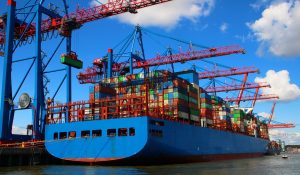While it is evident that intermodal transportation has several advantages, shippers need to know that intermodal transport makes better sense when the distance is more than miles.
Businesses looking to optimize their operations for better market competitiveness often look to streamline their logistics and increase transportation efficiency. Intermodal transportation offers several benefits over conventional modes by reducing cost and increasing capacity, safety, and sustainability. Find out what intermodal transportation is and why shippers should embrace it at the soonest:
What Is Intermodal Transportation
Intermodal transportation involves using two or more methods for carrying containers that allow shippers to switch modes of transport seamlessly without physically handling the freight. You can broadly classify intermodal transportation into two – domestic and international. Unlike international containers that come in 20-foot or 40-foot sizes, intermodal containers follow a standard 53-foot size. International intermodal transportation can use all three modes of transport but cannot accommodate the 53-foot containers on ships.
The Main Advantages of Using Intermodal Transport

Cost reduction: Intermodal transportation can offer significant cost economies when the railway is the primary mode of transport. However, the cost savings depend on the distance hauled and how far the shipper and consignee are from the rail heads. The cost per ton of freight transported by rail is significantly lesser than road transport. Additionally, when using intermodal transport, the goods remain in the same container till they reach the destination and therefore entail lesser handling cost, observes the CEO of MX Solutions. MX Solutions is a multimodal transport operator.
Access to great capacity: Intermodal transport relying on rail and high-volume freight lanes can offer shippers massive capacity. Shippers can ensure that the trucks achieve a quick turnaround and undertake multiple trips daily if the shippers can access rail freight loading and unloading ramps under 100 miles. Moreover, the railways can double-stack containers which double the carrying capacity. Compared to this, a single truck on a long-haul route will take several days to take another load.
Greater safety: There is less chance of accidents, theft, and damage when shippers use intermodal transport. Rail is inherently a safer option since the containers are constantly moving, the containers are not a solitary shipment, the railway police maintain a strict vigil, and terminals, rail yards, and docks have high levels of security. Railways also face fewer accidents compared to trucks. There is also less chance of transit damage due to less frequent freight handling. According to the American Association of Railroads, more than 99.99 percent of hazardous materials transported by rail reach their destination safely.
Sustainability: Compared to road transport, intermodal transport is inherently more sustainable due to higher fuel efficiency, freight efficiency, and less environmental impact of rail and ocean shipping. The U.S. Environmental Protection Agency says the energy efficiency of rail is up to five times more than that of trucks, with a similar comparison for greenhouse gas emissions.
Conclusion
While it is evident that intermodal transportation has several advantages, shippers need to know that intermodal transport makes better sense when the distance is more than miles. Also, cost efficiencies are better with high freight volumes due to freight efficiency and capacity advantage. Also, intermodal transport works best for deliveries that do not have a strict deadline since it takes time to load and unload the containers at the switchover points.


Join the conversation!